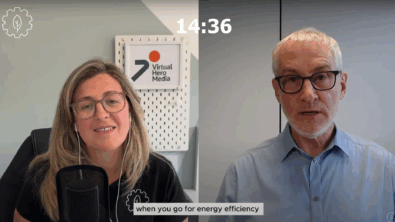How software/hardware integration helps automakers build tomorrow’s vehicles

From smartphones to cars, software is increasingly a critical component in many of the products we use every day. This growing demand for more high-tech features being incorporated into products, especially vehicles, means manufacturers are dealing with more software/hardware integration challenges, especially as customers expect smarter and more connected products.
This mounting product complexity requires integration of the software-driven features into the mechanical, electrical and electronic systems of a vehicle. Managing this requires access to digital technologies that can transform the way companies compete, collaborate and connect. Siemens Xcelerator software for industry is built to turn complexity into a competitive advantage, ensure companies have the software and services available when they need them and that they can forge their digital journey their way.
The challenges of software/hardware integration
Automakers are applying software to enable their vehicles to be smarter and more adaptive, convenient and desirable to the customer. Many of the features that consumers expect, such as adaptive cruise control and advanced driver assist systems, would not be possible without software, which must receive sensor information and trigger responses in a matter of milliseconds.
But more software adds a lot of complexity, especially as it interacts with the hardware in real-time. Processing units within the vehicle must compensate for that real time aspect of the software through both computational power and performance to react in milliseconds.
This software/hardware integration highlights the siloed nature of the development process. The more domains in the process the higher the possibility of problems when engineering teams and disciplines synchronize their designs. On top of that, it vastly increases the challenge of managing the internal teams and departments as well as suppliers delivering components and subsystems.

Because of the siloed nature of current processes, there is potential for issues that may not be discovered until late in the development or manufacturing process that need to be fixed. The closer to the launch the problems occurred, the costlier they are to remedy. And should the issue remain undiscovered until after the overall vehicle development, the higher the potential for recalls. Cars are already becoming quite complex. Autonomous vehicles will accelerate that complexity to a point that’s unsustainable given current development and systems engineering methods. Automakers must look at new ways of doing things and the answer lies in digitalization.
The software demands for autonomous vehicles
An autonomous vehicle must do what a human does – drive the car.
This creates complex demands for the systems that interact with each other, which includes the hardware, software and the mechanical and electromechanical systems. The software systems will have to fulfill a greater number of requirements for features and functions making verification and validation a major aspect to ensuring safety and reliability before the vehicle hits the road.
Having the right digital tools in place for change management is key to ensure testing and validation is complete even after the smallest alteration as it could have a cascading affect. Even when the vehicle is out on the road, the manufacturer must be able to send software updates based on real-time feedback and ensure that those changes won’t impact vehicle performance.
This concludes the first part in our two-part series.
In the next part, How digitalization in the automotive industry benefits manufacturers, we will discuss how the digital tools, such as Siemens Xcelerator software for industry, provides a pathway for manufacturers to meet the complexity challenges of software/hardware integration into tomorrow’s sophisticated vehicles.
Learn more about Siemens Xcelerator and discover how you can turn the complexities of software/hardware integration into your competitive advantage.

